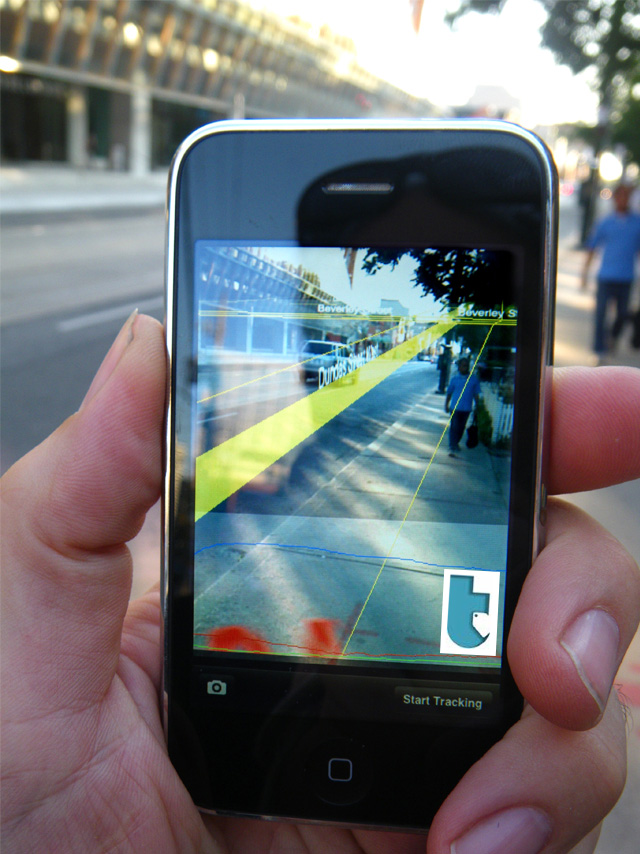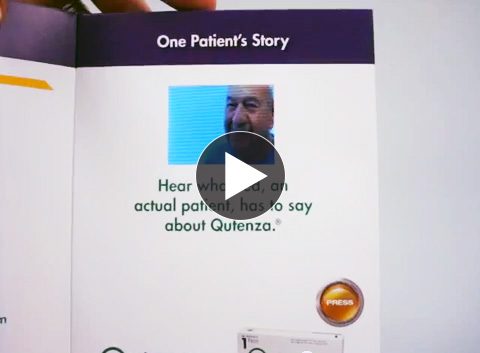Hello, friends! This week we’re talking tech. We’ll take a quick look at some cool ideas that you can easily incorporate into your printed campaign. By incorporating these cost-effective elements into your strategy, your customers are able to interact with your brand in another dimension. Let’s start with the basics:
Video, Lights, and Sound: You can marry full motion video with the printed page. Video is available in a variety of screen sizes, video lengths, and is fully rechargeable and re-usable. It’s also 100% customizable. Think audio and LED panel lights are more suited to your marketing needs? Connect with your customers by inserting this technology in unique magazine inserts, direct mail, point of purchase displays, and premiums. Check out a video player that we produced for Qutenza:
Augmented Reality (AR) is not new, but has steadily been gaining traction in recent years. The aim of AR is to simulate an environment in real-time via your mobile device or desktop computer.
 Augmented Reality on a mobile device.
Augmented Reality on a mobile device.
A printed “tag” lives on your print piece and this acts as the trigger to launch the animation, the video, or the 3D rendering that responds to the context of your environment. Check out more about how our partner Taggar, is revolutionizing the industry:
Near Field Communication: (NFC) has also been a player for several years but is still considered cutting-edge. The basic premise of this technology utilizes wireless radio communications. NFC tags are small, thin discs that can be inserted into print pieces or stickers and are read via your smartphone or other NFC-enabled device. There are multiple vendors who are already building this capability into the hardware of their mobile devices – including Samsung, Nokia, and LG.
Here are some potential creative uses for NFC tags in everyday life. (Imagine what you could do to promote your brand and increase customer interaction!)
All of these unique mediums are totally customizable. The only limits are what we can imagine together!




 style. Surely there are graphic designers that have no interest in slapping an ugly QR code on top of a beautifully designed piece. Not to worry! QR codes have an amazing amount of flexibility. The entire code is not necessary for an effective scan. Furthermore, the color makes no difference. It’s one of those things you have to tinker with.
style. Surely there are graphic designers that have no interest in slapping an ugly QR code on top of a beautifully designed piece. Not to worry! QR codes have an amazing amount of flexibility. The entire code is not necessary for an effective scan. Furthermore, the color makes no difference. It’s one of those things you have to tinker with. 



 QR Codes offer an opportunity that your sales team is craving. Deliver actionable sales leads in real-time, directly to the sales person and you become a marketing super hero. In combination with a well designed landing page, QR Codes can quickly and efficiently direct your prospects exactly where you want them to go. Last year, an innovative financial planning company, TIAA-CREF added a QR code to a printed piece, which directed recipients to a simple landing page with a click-to-call button on it. When the user clicked it, they were connected to a sales rep right on their cell phone.
QR Codes offer an opportunity that your sales team is craving. Deliver actionable sales leads in real-time, directly to the sales person and you become a marketing super hero. In combination with a well designed landing page, QR Codes can quickly and efficiently direct your prospects exactly where you want them to go. Last year, an innovative financial planning company, TIAA-CREF added a QR code to a printed piece, which directed recipients to a simple landing page with a click-to-call button on it. When the user clicked it, they were connected to a sales rep right on their cell phone.